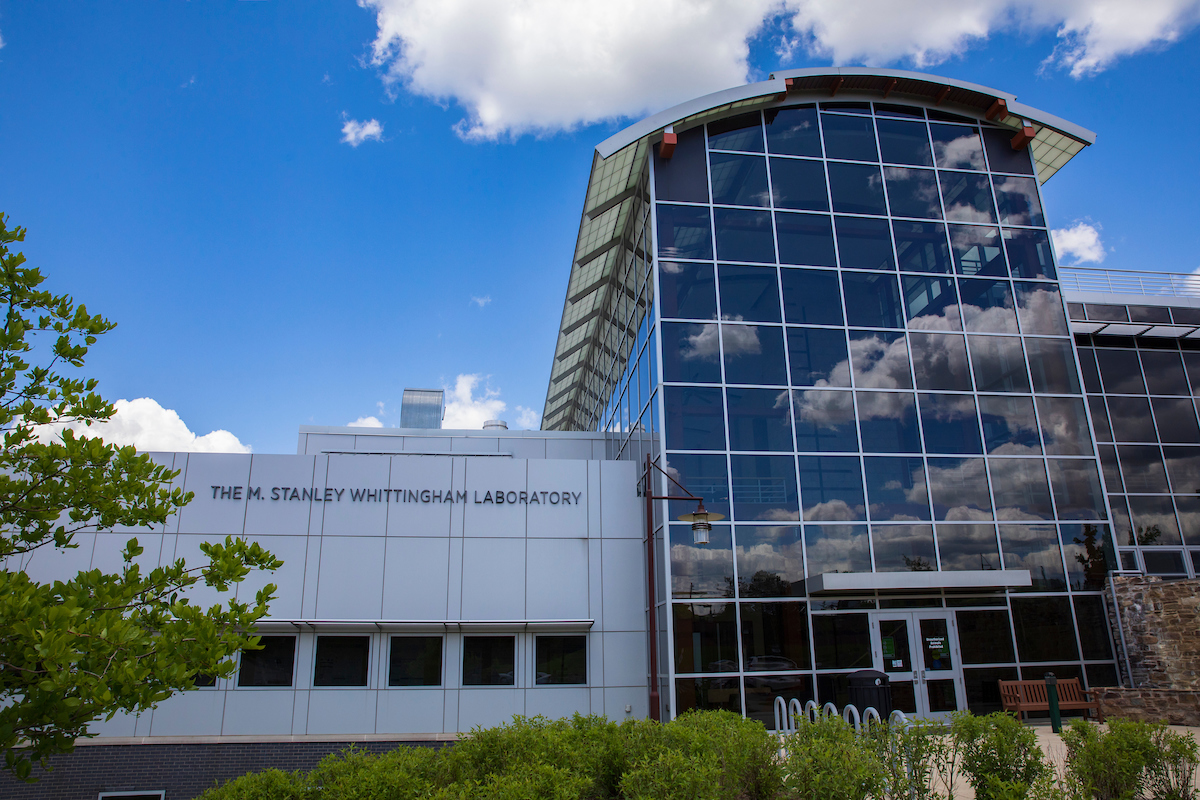Binghamton University New Energy NY project a finalist in $160 million National Science Foundation competition
New Energy New York team among 16 finalists selected from original 188 applications

The New Energy New York (NENY) Storage Engine (NENY-SE) proposal, led by Binghamton University, was selected as one of 16 finalists in the National Science Foundation’s (NSF) inaugural Regional Innovation Engines competition after participating in a virtual site visit on July 11.
NENY-SE’s proposal seeks to position the Southern Tier region of upstate New York as a national leader in battery innovation, workforce development and manufacturing, building on the foundation established by the NENY project supported by the U.S. Economic Development Administration (EDA) Build Back Better Regional Challenge (BBBRC) and New York Empire State Development (ESD).
Winning proposals will be eligible to receive up to $160 million over a 10-year period to build out regional innovation ecosystems around technology sectors of national importance. Originally receiving 188 applications spanning critical technology areas emphasized in the CHIPS and Science Act, the competition was narrowed down to 34 semi-finalists, and then 16 finalists.
“This is fantastic news for the Binghamton team, whose innovative work has the potential to advance battery technology, drive battery production, and bolster the region’s economy,” said President Harvey Stenger.
Core partners of NENY-SE include the New York Battery and Energy Storage Technology Consortium (NY-BEST), Cornell University, Rochester Institute of Technology, Syracuse University, Launch NY and Imperium 3 New York. NENY-SE is also supported by the EDA BBBRC NENY 16-member coalition and 18 additional cross-sector partners.
If funded, NENY-SE will foster U.S. technology leadership, strengthen national security, and support state and national net-zero climate goals.
“The future of our country depends on exploring new energy solutions,” said Distinguished Professor and Nobel Laureate recipient M. Stanley Whittingham. “With this funding, the NENY Engine team will be able to further pursue these game-changing technologies and help the United States meet the economic goals of today and tomorrow.”
“Our team of cross-sector partners have been championing unparalleled clean energy initiatives across upstate New York,” said NENY Engine project director and Associate Vice President of Innovation and Economic Development Per Stromhaug. “And we look forward to building on this to position the region as a national innovation engine.”
Execution of the Engine proposal and its widened focus throughout the entirety of the battery lifecycle is dependent upon the support of an expanded state-wide partner network.
“NY-BEST is excited that our coalition’s proposal has advanced to the final round of NSF review. This reflects the importance of advanced batteries and energy storage in addressing the pressing global climate change challenge, as well as supporting regional innovation, stimulating economic growth and job creation,” said William Acker, executive director of NY-BEST.
“We are grateful that NSF has recognized the strength of the NENY-SE proposal and look forward to the final stage of the competition to establish upstate NY as a national leader in battery technology,” said Vice President for Research and Innovation at Cornell University Krystyn Van Vliet.
“To be considered a finalist in one of most sought-after NSF programs is a testament to the hard work and capabilities of the partnering organizations,” said Vice President for Research and Associate Provost at Rochester Institute for Technology Ryne Raffaelle. “At RIT, we are grateful for the support and the role we have played in helping develop the burgeoning lithium-ion battery ecosystem in New York.”
“Syracuse University is excited to aid in revolutionizing and commercializing battery technologies via solid-state electrolytes and interface engineering for use in electric vehicles,” said College of Engineering and Computer Science at Syracuse University Dean Cole Smith.
“Our team is dedicated to supporting energy storage technology translation and venture growth here in upstate New York and believe this project will not only have profound societal and national impacts but ensure industry-driven and inclusive regional economic development,” said Launch NY Inc. President and CEO Marnie LaVigne.
“It is critical for the U.S. economy to build a cohesive domestic ecosystem for battery manufacturing,” said Shailesh Upreti, CEO of C4V and chairman of iM3NY. “We’ve been focusing on accelerating technologies and converting them into affordable battery products for the past decade. NENY, especially if turbocharged as an NSF Engine, could mean an unbeatable support system, and C4V and iM3NY are excited to be part of this and lead as an active industrial partner.”
New York state, under the leadership of Senator Schumer, is pioneering critical energy storage efforts. Schumer’s support initially helped NENY secure $63.7 million in federal funding through EDA BBBRC, with a $50 million state match from ESD. The senator continues to lend his support throughout the NSF Engines competition.
“Binghamton is in the middle of a full transformation to become the beating heart of innovation for America’s battery belt,” said Senator Schumer. “Batteries are the building blocks of modern technology and the lynchpin of the transition to a carbon-free economy, and I will keep fighting to deliver the resources needed to bring back this industry from overseas and ensure America’s clean energy future is built here in the Southern Tier and upstate NY.”
The next step of the Engine selection process includes an in-person site visit from the NSF team this fall. This in-person visit will feature interviews to assess project risks, committed resources and the team’s ability to adapt to a changing environment. The NSF anticipates announcing Engines winners later this fall. Each Engine winner will initially receive $15 million for the first two years, with additional funds subsequently released annually upon completion of mandated project milestones.
